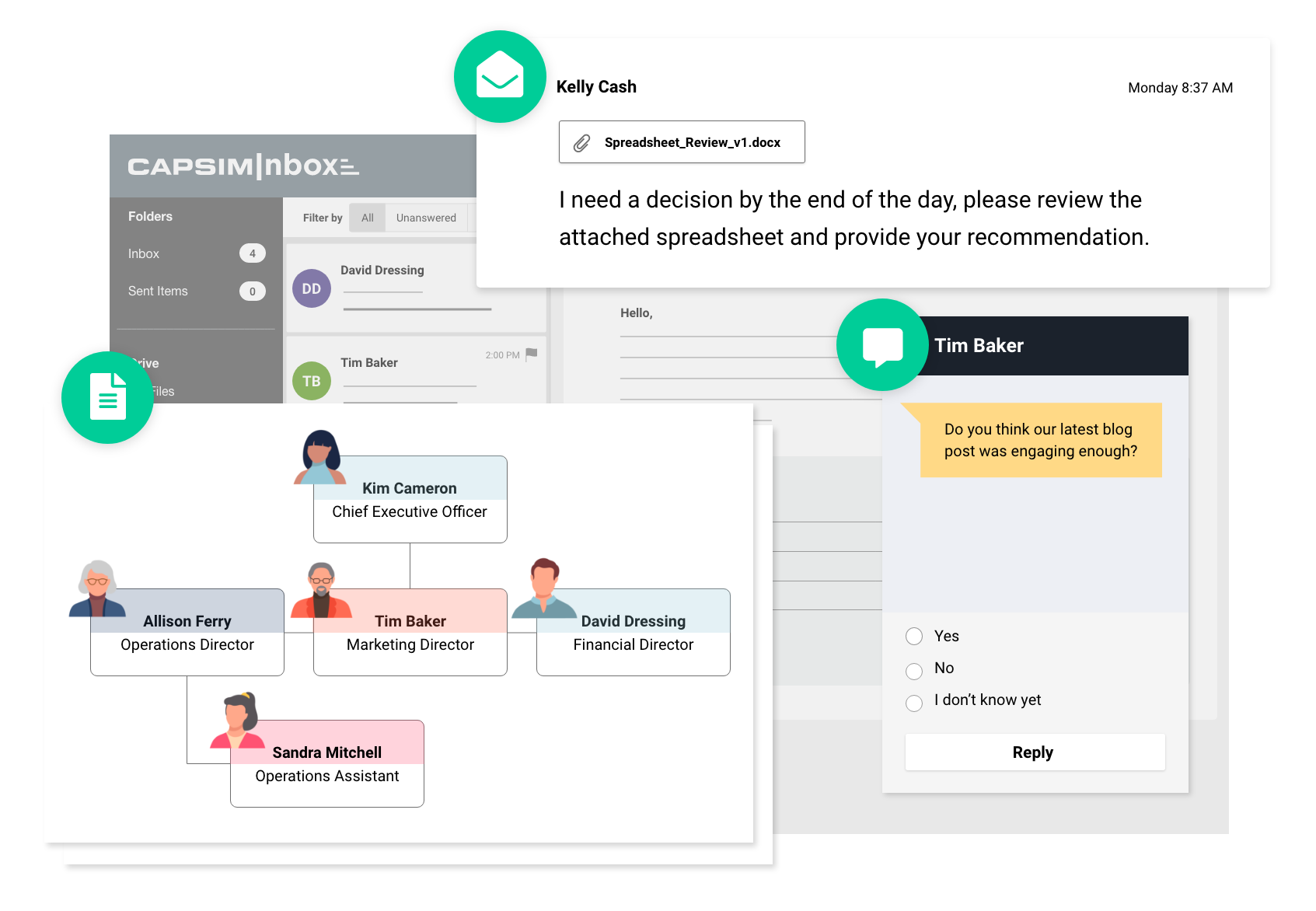On-the-Job Training Methods vs. Simulations: Which is More Effective?
December 29, 2021

According to Forbes.com, only 10 percent of training done at the corporate level is effective. That’s a bleak statistic for professional development, but things get even bleaker if we consider that a similar figure may apply to our new-hire training.
Try to put yourself in the shoes of your new hires. On day one, when they walk in the door or sign in to their new work account for the first time, what is the training method that will best enable them to get up to speed quickly and start creating wins for your organization? On-the-job training, or simulation-based learning?
This post will examine two different training methods. We will look at the pros and cons of both on-the-job training and business simulation training to determine which methodology will get you the best — and quickest — results.
On-the-Job Training or Simulations: Which is Best?
Before we can settle the debate of which training method is superior, we need to describe each method in detail. Firstly, let’s discuss on-the-job training, often called OTJ.
OTJ is one of the most commonly used methods of professional training for new hires. This type of training refers to training done with a mentor or manager performing tasks and regular job functions for a specific position. Sometimes, this is referred to as job shadowing and includes a mix of observational training and hands-on experience in the real work environment.
A few common use-cases for OTJ training are:
- Simple, easy-to-replicate tasks
- Tasks requiring teamwork
- Jobs with high turnover rates
On the other hand, simulations involve presenting employees with key scenarios they might encounter in their role in a controlled environment. This type of training is similar to OTJ because it presents new hires with real-life scenarios. Still, unlike OTJ, simulations are done outside of the actual work environment, allowing employees to make errors without real-world consequences.
Simulation-based learning can be used in practically any position since simulations can be customized to specific roles and the skills required for success. A few recommended use-cases for simulations are:
- Tasks with multi-step processes
- Soft skills training
- Tasks or positions with steep consequences for errors
- Allowing new hires to gain comfort with an unfamiliar task
RELATED READING: How an Operations Management Instructor Built an Inbox Simulation to Recreate Real-World Problem-Solving
With each training method defined, let’s look at the benefits, drawbacks, and typical use cases for each.
On-the-Job Training
On-the-job training has some advantages. First off, it makes it easy for employees to adapt to their new position. Taking part in the tasks they’ll be expected to perform gives them the chance to practice and gain some metaphorical (or perhaps literal) muscle memory for those tasks.
Additionally, OTJ training allows for bonding and team-building. The employee can develop a relationship with their trainer, which can help them feel more comfortable in their new position and increase feelings of camaraderie early on in their career at your company.
RELATED READING: 5 Tools for Building an Effective Team
Another benefit of on-the-job training is the simplicity of this method. The setup process for OTJ training is simple, as it generally involves a new hire shadowing an experienced employee. Management doesn’t need to provide any additional materials, as the employee and their trainer will simply be working with existing materials in the workplace to conduct the training and the day’s work simultaneously.
Drawbacks of On-the-Job Training
On-the-job training isn’t without its drawbacks, of course. Chief among these drawbacks is consistency in the training process. Consider the trainer your new employee is shadowing. Do they do their job duties correctly? If not, they may be passing along incorrect information to the next group of workers, resulting in widespread issues and broken processes down the road.
Even if the trainer is a model employee, OTJ training makes it difficult to predict each day’s training. A “day-in-the-life” varies in most jobs, and so training workers on issues as they arise can be inefficient and result in significant gaps in their knowledge.
Lastly, on-the-job training lowers productivity in the workplace, as you are relying on an existing employee to complete training. These additional responsibilities will slow down that employee’s work production for the new hire’s training duration.
Simulations
The first, most obvious benefit of simulations is the fact that they are repeatable. Using a simulation to complete your training guarantees that every new hire is exposed to the same training scenarios and receives consistent feedback to navigate those scenarios. This consistency helps to reduce miscommunications about processes and expectations in the workplace.
Another benefit of simulations is that the learning modules mimic authentic, real-world scenarios in a risk-free environment. OTJ training is, of course, as “real world” as training gets.
But a mistake made in on-the-job training may have real consequences for your business and customers. It could be time lost to redoing a task, loss of reputation with a client, or losing a client altogether. Training new hires using simulations allows them to experience realistic scenarios without exposing your organization to risk if they do not handle those scenarios properly.
Lastly, simulation training allows you to tailor your employee’s real-world scenarios to the most critical situations. This customizability allows you to expose your employees-in-training to all desired experiences during their training period, rather than waiting for similar scenarios to come up organically on the job.
However, there are a few drawbacks to simulations, the first of which is price. Simulations are customizable, meaning you can test your employees on job challenges specific to your organization. But it can be expensive in terms of both time and money to produce custom simulations.
It’s a matter of financial cost versus the cost of dips in productivity, incomplete training, and the potential for mistakes that are negative side effects of OTJ.
On-the-Job Training Methods vs. Simulations: A Choice You Don't Have to Make
Earlier, we posed the question of which is best between OTJ and simulation-based learning. Examining the analysis above should clarify that simulations and on-the-job training have their strengths and uses. It’s not so much a question of “which is best” as it is combining both methods for a comprehensive training and development program.
Simulation learning platforms like CapsimInbox should be used in conjunction with training methods like OTJ training to make your training programs more effective and to help key skills and information stick for employees. For example:
- CapsimInbox gives employees a lot more reps in a safe environment.
- Once they’ve done well in simulations, you can move them into OTJ and real work situations.
- Simulations help identify skill gaps and strengths that can be confirmed via observations in OTJ.
- Reporting and progress tracking in CapsimInbox can also be confirmed via OTJ and job performance (another bonus of simulations feedback is individualized AND automatic).
If you’ve relied on on-the-job training and are looking for a cost-effective supplement that can be spun up quickly, look no further than CapsimInbox. You can test-drive our self-guided demo to see what an inbox simulation feels like and how it can benefit your employees.





.png?width=80&name=1-questions%20(1).png)